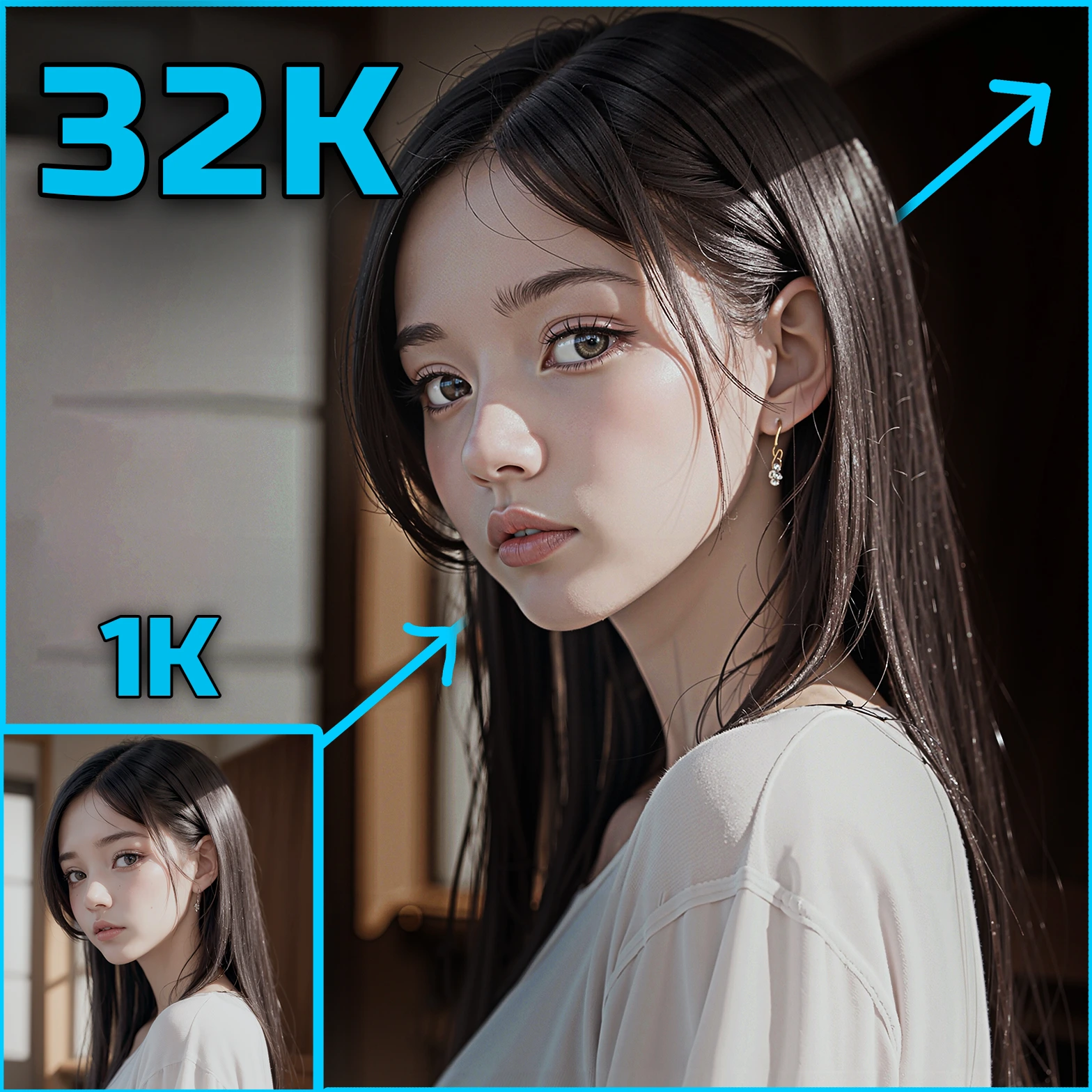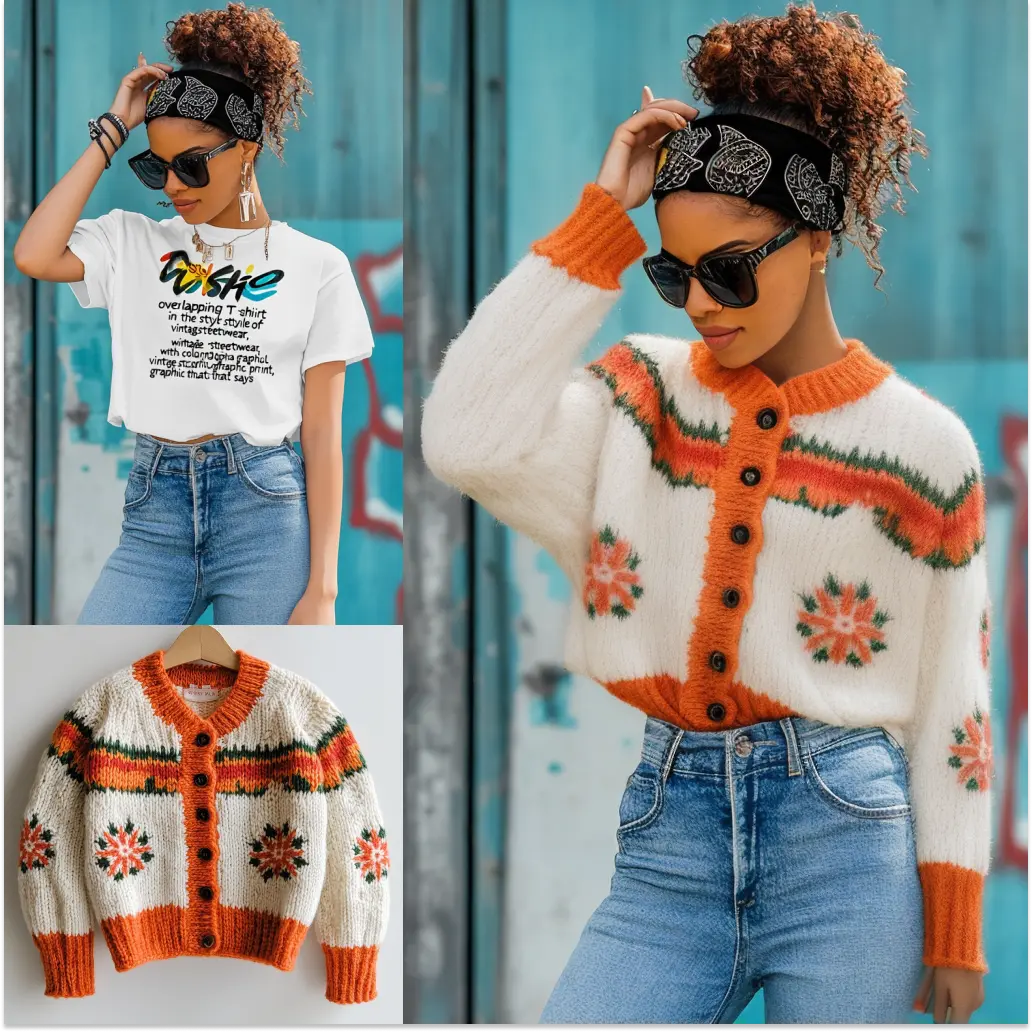ComfyUI Node: MultipleLoraLoader10 🍌
MultipleLoraLoader10|cgem156
Categorycgem156 🍌/multiple_lora_loader
laksjdjf (Account age: 3116days) Extension
cgem156-ComfyUI🍌 Latest Updated
2024-09-12 Github Stars
0.06K
- Description
- MultipleLoraLoader10 🍌| MultipleLoraLoader10 🍌:
- MultipleLoraLoader10 🍌| MultipleLoraLoader10 🍌 Input Parameters:
- MultipleLoraLoader10 🍌| MultipleLoraLoader10 🍌 Output Parameters:
- MultipleLoraLoader10 🍌| MultipleLoraLoader10 🍌 Usage Tips:
- MultipleLoraLoader10 🍌| MultipleLoraLoader10 🍌 Common Errors and Solutions:
- Related Nodes
How to Install cgem156-ComfyUI🍌
Install this extension via the ComfyUI Manager by searching for cgem156-ComfyUI🍌- 1. Click the Manager button in the main menu
- 2. Select Custom Nodes Manager button
- 3. Enter cgem156-ComfyUI🍌 in the search bar
Visit ComfyUI Online for ready-to-use ComfyUI environment
- Free trial available
- 16GB VRAM to 80GB VRAM GPU machines
- 400+ preloaded models/nodes
- Freedom to upload custom models/nodes
- 200+ ready-to-run workflows
- 100% private workspace with up to 200GB storage
- Dedicated Support
MultipleLoraLoader10 🍌 Description
Facilitates loading and blending up to ten LoRA models for AI-generated art with control over strength and normalization.
MultipleLoraLoader10 🍌| MultipleLoraLoader10 🍌:
The MultipleLoraLoader10| MultipleLoraLoader10 🍌 node is designed to facilitate the simultaneous loading and application of up to ten LoRA (Low-Rank Adaptation) models to a given base model. This node is particularly useful for AI artists who want to blend multiple LoRA models to achieve complex and nuanced effects in their AI-generated art. By allowing the user to specify the strength and application of each LoRA model, the node provides a high degree of control over the final output. Additionally, it offers normalization options to ensure that the combined strength of the applied LoRA models is balanced, preventing any single model from overpowering the others. This node is essential for those looking to experiment with and fine-tune multiple LoRA models in a cohesive and efficient manner.
MultipleLoraLoader10 🍌| MultipleLoraLoader10 🍌 Input Parameters:
model
This parameter specifies the base model to which the LoRA models will be applied. It is a required input and serves as the foundation upon which the LoRA modifications are built.
normalize
This boolean parameter determines whether the strengths of the applied LoRA models should be normalized. If set to True, the combined strength of all applied LoRA models will be scaled to match the value specified in normalize_sum. The default value is False.
normalize_sum
This parameter specifies the target sum for the normalized strengths of the applied LoRA models. It is only relevant if normalize is set to True. The default value is 1.0, with a minimum of -50.0 and a maximum of 50.0, adjustable in steps of 0.01.
lora_name_0 to lora_name_9
These parameters allow you to specify the names of up to ten LoRA models to be applied. Each parameter can be set to a LoRA model name or "None" if no model is to be applied in that slot.
strength_model_0 to strength_model_9
These parameters define the strength with which each corresponding LoRA model is applied to the base model. The default value for each is 1.0, with a minimum of -20.0 and a maximum of 20.0, adjustable in steps of 0.01.
apply_0 to apply_9
These boolean parameters determine whether each corresponding LoRA model should be applied. If set to True, the LoRA model will be applied with the specified strength. The default value for each is True.
clip_optional
This optional parameter allows you to specify a CLIP model to be used in conjunction with the base model and LoRA models. If not provided, the node will operate without a CLIP model.
MultipleLoraLoader10 🍌| MultipleLoraLoader10 🍌 Output Parameters:
model
The output model is the base model with the specified LoRA modifications applied. This model reflects the combined effects of all the applied LoRA models, adjusted according to their specified strengths and the normalization settings.
clip
The output CLIP model, if provided as an input, will also have the specified LoRA modifications applied. This allows for consistent modifications across both the base model and the CLIP model.
MultipleLoraLoader10 🍌| MultipleLoraLoader10 🍌 Usage Tips:
- To achieve a balanced blend of multiple LoRA models, enable the
normalizeparameter and set an appropriatenormalize_sumvalue. - Experiment with different strengths for each LoRA model to fine-tune the final output. Small adjustments can lead to significant changes in the generated art.
- Use the
applyparameters to selectively enable or disable specific LoRA models without having to remove them from the input list.
MultipleLoraLoader10 🍌| MultipleLoraLoader10 🍌 Common Errors and Solutions:
"LoRA model not found"
- Explanation: This error occurs when the specified LoRA model name does not exist in the designated folder.
- Solution: Ensure that the LoRA model names are correctly specified and that the models are located in the correct folder.
"Strength sum is zero"
- Explanation: This error occurs when the combined strength of all applied LoRA models is zero, which can happen if all
strength_modelvalues are set to zero or if allapplyparameters are set toFalse. - Solution: Adjust the
strength_modelvalues and ensure that at least oneapplyparameter is set toTrue.
"Normalization scale is invalid"
- Explanation: This error occurs if the normalization scale cannot be calculated, usually due to a zero or negative
normalize_sum. - Solution: Ensure that the
normalize_sumis set to a positive value and that the combined strength of the applied LoRA models is not zero.
MultipleLoraLoader10 🍌 Related Nodes
- Description
- MultipleLoraLoader10 🍌| MultipleLoraLoader10 🍌:
- MultipleLoraLoader10 🍌| MultipleLoraLoader10 🍌 Input Parameters:
- MultipleLoraLoader10 🍌| MultipleLoraLoader10 🍌 Output Parameters:
- MultipleLoraLoader10 🍌| MultipleLoraLoader10 🍌 Usage Tips:
- MultipleLoraLoader10 🍌| MultipleLoraLoader10 🍌 Common Errors and Solutions:
- Related Nodes
RunComfy is the premier ComfyUI platform, offering ComfyUI online environment and services, along with ComfyUI workflows featuring stunning visuals. RunComfy also provides AI Playground, enabling artists to harness the latest AI tools to create incredible art.


